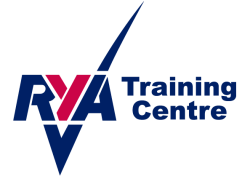How to Raise and Lower Sails On A Catamaran: More Than One Way?
I’m Stephen Cockcroft and share these bits of advice out of decades of sailing varied distances, conditions, and boats. Most sailors mistakenly think that there is only one way to raise and lower your sails. When I watch yachts hoisting their sails it seems the standard procedure is that there is a helmsman who uses the diesel engine to hold the bow into the wind while the mainsail is hoisted. Once the main sail is up then the jib is deployed as the helmsman bears away filling the sails with wind. Once the yacht is sailing, the engine is then switched off. With lazy jacks on the main this can be a challenge because if the boat is not pointing perfectly into the wind then the leech of the sail and the battens hook up with the lazy jacks. I have watched many a crew getting quite testy with each other as they try to co-ordinate the maneuver. TIP: I always consider the auto pilot a third crew member, so a good idea is to engage the auto pilot while motoring slowly forwards and then adjust the heading until you are heading directly into the wind. Now you do not have to worry about the helmsman keeping the head to wind and he can assist the crew with the hoisting of the Mainsail. However, there is no rule that says the main has to go up first. You can also leave the anchorage and deploy the Jib first. The good thing about deploying the jib first, is that you do not have to be head to wind and there are no lazy jacks to snag the leech of the sail. Now head up so that you are close reaching with the jib only (engage the auto pilot if you like). Once you have settled down and the boat has way on, sailing nicely, the next thing to do is to release the main sheet and push the boom out to leeward. Now, while you are sailing, you can hoist the main. Because the boom is out to leeward the main sail will be completely luffed and there will be no pressure on the sail so you will have the same effect as being head to wind. You will be able to hoist the main in a controlled manner while underway and once it is up, all you need to do is trim in the main sheet and you will be sailing with both sails up and the engine would have long since been switched off. If you think about this in reverse, it is the best way to put a reef into the main sail – while under full sail head up to a close reach, ease the main sheet until the main sail luffs, release the man halyard until the next reef points are at boom level, make them fast and then tension the halyard, trim the mainsail in and you are now sailing with a reef in the sail. You never missed a beat and did the entire operation while sailing – no engine required. This is after all a sailing vessel! There is another easy way to hoist the main without using the engine and this is to heave-to. The sequence to follow is to leave the anchorage under power and as soon as it is prudent, deploy the jib, turn the engine off and sail out to clear water where you have space to maneuver. Next thing you do is hove-to. The way you do this is to tack the yacht without touching anything (do not touch the jib sheets). The boat will tack and the jib will be back winded because you did not release the sheet so the wind will now be pushing the bow to leeward. Now turn the helm hard over to turn the boat to windward as if you are trying to get back in the original tack. What will happen is the backwinded jib will be cancelled out by the rudder, which is exerting force in the opposite direction. The result is that the boat will stop and stabilize and it will feel as if you were parked with the bow at about 45 degrees to the wind. Make sure you lash the helm over so that you remain hove-to. You will then be able to release the mainsheet, push the boom out until the main sail is luffed and hoist the main. You can also hove-to if you want to put a reef into the main sail or drop it completely. If you practice hoisting and lowering the main while under sail as well as using these methods to reef the main sail, you will very quickly find that your sailing ability and expertise will dramatically improve. It is also good to be comfortable using all the different methods from a safety point of view – you never know when you will need to use the sails because the engine will not start. A word of advice that I always follow: before you start dropping sails start your engine to make sure that you have propulsion once the sails have been stowed. Once all the sails are down is not the time to discover that your engine will not start.Sail With Us to Learn


Week-Long Liveaboard Courses
Rare RYA Classes & Certifications
Catamaran Guru’s real-life practical methods combined with up-to-date sailing theory in lessons aboard recent model catamarans…or your own boat!
Prepare for certifications or take the first step aboard to embark on your dream life of boat ownership or cruising
Classes in S Florida and the Bahamas.

Estelle Cockcroft
Catamaran Guru Co-Founder
Estelle Cockcroft is a seasoned sailor, catamaran expert, and co-founder of Catamaran Guru. With over 70,000 NM sailed and 30+ years aboard, she empowers new cruisers with expert advice on liveaboard life, yacht ownership, and ocean adventures.




